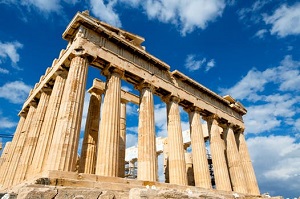The Natural History of Love by Morton Hunt
I bought this book at a used bookstore in Saskatoon nearly 5 years ago and didn’t read it until recently. Although I bought this book thinking that it would make a great gift for a friend of mine, I changed my mind and held on to it as I really liked what I saw in the first few pages. Unfortunately, this book would sit on my bookshelf for another four years while I was busy with other books. And when I finally did come around to reading it, I regretted not having got to it sooner.
This book attempts to cover nearly three thousand years of what love has meant primarily in the Western world. As an easterner (from India originally) who now lives in the western part of the world, I gained valuable insights from reading this book. I believe that this book should be a great read for people around the world primarily for two reasons. The first reason is to help understand the historical basis for the attitudes held by people living in the western world towards love and marriage. The second reason is that some of these ideas or attitudes are becoming increasingly universal. Here are some highlights for me as far as this book is concerned.
Greek Period
Hunt starts with the “Classical Period” of Greece (the time of Pericles, Socrates and Plato) focusing primarily on Athens when Greek society turned increasingly from a “Homeric” society with an emphasis on heroic poetry, philosophical inquiry, political diatribes and religious hymns to one that focused increasingly on abstract thinking, rhetoric, and ideals on physical beauty. Hunt describes this great age which featured many great leaders, philosophers and dramatists (such as Pericles, Socrates, Plato and Sophocles) as an age of contradiction especially when it came to attitudes towards love and marriage. The most bizarre life of Alcibiades, a stepson of Pericles, who was a great warrior and student of Socrates but would go on to betray Athens not once but twice is captured vividly in this book. The life of Alcibiades helps highlight the importance that the ancient Greeks gave to wisdom but also brings to light the historical irony in which many powerful and wise men and women were still easily seduced by bodily charm and make huge blunders as a result.

(North) Americans, who make more of marrying for love than any other people, also break up more of their marriages, but the figure reflects not so much the failure of love as the determination of people not to live without it. ~ Morton Hunt
Next, Xeophon’s book Oeconomicus (considered by many as the first book in the field of economics) provides a perfect back drop to Hunt’s exploration of the duties expected of a man and his wife regarding household management. Although women of higher classes enjoyed freedoms essentially unknown in the rest of the world, their responsibilities were still limited to household duties including the supervision of slaves and servants. Athenian women were also not permitted to wander in public unless accompanied by their servants. She was also totally dependent on her husband for support, but in case of divorce was permitted to retain her dowry that was offered by her family during the time of her marriage. She was also not entitled to any inheritance (it went only to male heirs); and if widowed, she was required to go back to her birth family. Hunt narrates the strong familial ties that a woman retained with her birth family even after her marriage because of these traditions, and the story of Intaphernes as narrated by the great historian Herodotus provides a fitting example.
The domestic life of the great philosopher of Athens, Socrates and his wife, Xanthippe and their many household quarrels are also covered in this book helping highlight the fact that no relationship is free from at least that occasional misunderstanding between spouses from time to time. Hunt also brings to light many anti-feministic attitudes that seemed prevalent at that time which are evident not only from the plays of great dramatists at the time such as Sophocles, Euripides and Aristophanes, but also from the books of the great philosophers of the time including Plato and Aristotle. Hunt provides an example by examining one of Plato’s books (Book Five of the “Republic”) where Plato describes a woman as essentially being inferior to that of man. Plato also argues for a communal marriage where women are to be treated no more than a common wealth by all men in the society strictly for increasing their progeny and for caring for their young. Hunt cites the great Aristotle, a student of Plato, who although disagreeing with his master on the need for a communal marriage still considered a woman to be inferior to man in mind and body in his book Nichomachean Ethics.
Despite Hunt’s brilliant exposition of these facts, my fondness of ancient Greek ideals and philosophy remains undiminished. It is easy to criticize our ancestors looking back from the vantage point of increased knowledge and considering the many equalitarian principles that that exist in many modern societies of today which have only been established after thousands of years of fighting social and religious dogma. However, I do like this book because it helps shed light on the fact that there was much confusion around the concept of love even during, what is considered by many as, one of man’s greatest periods of intellectual achievement.
Roman Period
The Romans had a more pragmatic outlook and expanded very little in many areas such as religion, philosophy, drama, poetry and architecture that had been advanced by the Greeks who preceded them, and who had helped lay the foundation for many civilizations that followed them. However, the Romans achieved monumental feats in the areas of engineering, civic administration and warfare techniques as they focused most of their efforts at empire building. Hunt focuses his attention on this extremely interesting period of human history by peeking into it from a standpoint of love and marriage. He provides a balanced view by covering not only the lives of emperors and senators who have been so featured so prominently in books, but also the lives of its middle-class citizens.

During the early period of this civilization (7th to 1st century BC), Rome was a republic. It was primarily an agrarian society with an emphasis on strong familial ties and was quite patriarchal in nature. Although Hunt does not cover this period, he does briefly describe the important role that women played during this time. These large hipped, sturdy and hard-working women often managed their farm and raised their families by themselves while their men were away in distant lands for trade, conquest and empire building. However, as Rome grew in power, its citizens increasingly migrated to the capital leaving their farms to be assimilated by wealthy landowners who then relied increasingly on slaves for various chores. Rome also increasingly imported goods for consumption from distant lands (from far as far as China). The utilitarian value that the family and clan-ship ties had provided thus far slowly crumbled, and the need for a family slowly diminished as a result.
Hunt first covers the story of Catullus and his extra-marital relationship with Clodia, a wife of a governor of a Roman province. The story set in the 1st century BC provides a good example of the moral decay and spiritual emptiness that most citizens faced during the time that many would consider to be the peak of the Roman civilization. Hunt then proceeds to cover the lives of Julius Ceaser, Octavian, Mark Anthony and Cleopatra providing some insight into the political reasons and power struggles that were driving reasons for the various relationships that were forged amongst these parties. The life of Octavian who would eventually be crowned “Augustus” by the senate and would serve as the first emperor of Rome is covered well. Although his reign is considered by many historians as prosperous and relatively peaceful, the great emperor had his own share of familial troubles including those from his very own daughter, Julia, who ignored several moral laws that her father attempted to enforce within his empire. Julia led a promiscuous life and her adulteries became so well known in Rome much to her father’s dismay who would eventually banish her to a remote island. Although I had heard about Ovid and some of his literary works, I didn’t know about much about the life of this poet. Hunt provides some insight into Ovid’s life from his early years when he arrived in Rome to learn law and would later become well known for his love poetry. Ovid’s work Ars Amatori, a book on courtship with several references encouraging adultery would irk Augustus so much that he would banish the poet to live his last days in a desolate place near the Black Sea.
Hunt continues his coverage of Roman period by describing the increased freedoms that women enjoyed for several centuries following the rule of Augustus. Some coverage is also provided about life during the time of Emperor Tiberius, Emperor Hadrian and Emperor Marcus Aurelius as well. Hunt then concludes his coverage of latter period of Rome as primarily one that was filled with chaos and confusion and weakened by frequent attacks by barbarian tribes. He also makes the case that an increased disentanglement of sexual pleasure from considerations of parenthood among its citizens resulted in lower birth rates among its citizenry hastening the collapse of the empire even further.
Fall of Rome and Dark Ages
Hunt next tackles the period of nearly 700 years that followed the fall of the Western Roman Empire. Even during the second century AD, several Roman moralists and early practitioners of the new faith of Christianity began to condemn the moral decline and the material excesses of the empire. The rich still lived very opulently, and there was still construction and expenditure throughout the empire on a grandiose scale. However, there were numerous signs of the empire’s imminent collapse. Hunt takes the reader through these tumultuous times which featured the breakdown of the family and kinship ties as well as ever decreasing loyalty to state. The rise of new religion of Christianity which in its early stages promoted a simple life, camaraderie and care for the helpless and the weak, and a humble attitude in life became increasingly appealing to many of its disillusioned citizens. Hunt traces the growth of this religion from its simple beginnings to its ascent as a state religion under Emperor Constantine. He then tackles the historical basis for the change in attitudes towards love and marriage that that is still felt even in the 21st century.
Hunt begins the exploration of this period by focusing on the city of Alexandria in Egypt which was part of the Roman empire. This city was the lighthouse of intellectual progress after the fall of Athens. Its citizens enjoyed peace and prosperity unlike any other place on earth that lasted from the time of Alexander the Great till the end of the period of Roman occupation. Hunt covers an unusual ascetic tradition that involved married couples by citing the life story of Ammon, a young man from a wealthy family raised in Hellenic traditions. Although raised in a wealthy family, Ammon became increasingly attracted to the preaching of the new religion of Christianity that was taking the world by storm. After being married of to another young woman through a traditional Hellenic ceremony as per wishes of his uncle, Ammon convinces his young wife on their wedding night to leave their city for rather rustic surroundings and to live the rest of their lives in a monastic fashion. This behaviour must have been quite unprecedented back then especially since the prevailing Hellenic and Roman traditions must have strongly favoured sexual pursuits for pleasure.

The next section of the book covers an equally bizarre tradition of “spiritual marriage” practiced by some members of the clergy. Hunt explores the lives of several clergymen who lived and slept with “virginal” women although they were sworn to strict celibacy. This custom apparently lasted hundreds of years, and was not banished until 1100 AD. Although some of these stories were quite funny to read, I could not help but admire the fortitude of the individuals who were able to successfully resist their biological desires. Hunt then covers the gradual development and spread of this ascetic tradition throughout the empire as well as its assimilation into the main fabric of this new religion. By citing several examples, he makes a case that this new-fangled tradition led to an increasingly hostile and overly aggressive attitude towards women. The woman was beginning to be seen increasingly as someone who was able to corrupt and impede the pursuit of spiritual enlightenment. But the ascetic tradition however also resulted in several other changes for the society including a gradual ennoblement of the concept of marriage as the authorities realized that it was somewhat a “necessary evil” for producing progeny, and therefore potentially more adherents for their new faith. According to Hunt, as the benefits of marriage became increasingly obvious again, this custom then slowly began to be sacrosanct, a view that has lasted from this point on until modern times. Next, Hunt covers the lives of certain key figures of this religion including those of Tertullian and Saint Augustine, and how their doctrines and literature would go on to fundamentally shape and organize the fabric of its teachings. Saint Augustine has featured so prominently in many books on philosophy (including many that I own), and Hunt’s coverage of the trials and tribulations of his life finally provided a good basis for understanding his works for me.
The High Middle Ages and Courtly Love
The next period that Hunt tackles is the period of the High Middle Ages, a period approximately 400 years starting the 10th century AD. This was the time when Europe was on the rise again, its population increasing steadily, and many nation states were steadily vying for power. The relationships and attitudes that men and women in the west were to be fundamentally changed forever because of a new set of love sentiments called l’amour courtois, otherwise known to us as “courtly love”. Hunt explores the evolution of courtly love from its early beginnings in the courts of France when it was simply a game and a literary conceit to its eventual and surprising role in elevating the woman’s role from simply that of a child-bearer or a lust satisfier to a shaper of progress. All romantic notions of love and marriage that most people hold in the western world today had their origins in this custom which primarily began among kings, queens, aristocrats and noblemen.

Hunt takes the reader to the courts of the first of the troubadours, William IX, Duke of Aquitaine in France, where courtly love had abruptly begun. William IX, who would go on the First Crusade, and fight many fierce battles, and still play a part in the origin of courtly love was very interesting to read. The concept of Amor Purus, or “pure love” had come to mean over many hundred years of refinement of Christian beliefs, the worship of Mary, who was the mother of Jesus Christ. During this era, this also somehow came to mean a total devotion or worship as well as deeds in service for a woman the men loved. Hunt provides some Insights into the life of Eleanor, the granddaughter of William IX, whose courts (especially at the Castle of Poitiers) saw the concepts of courtly love defined and refined to the greatest degree and would have long lasting effects on romantic notions of the western world until this day.
Other highlights for me from this period include the story of Ulrich von Lichtenstein and his famous love parade which he undertook for winning the love of an unnamed lady. This parade which lasted approximately 5 weeks and would start in Venice and culminate in Vienna during which he broke lances with nearly 300 knights, never being unmounted in any of his fights. This story was so bizarre and fascinating at the same time, and it gives you a great insight into the origins of medieval chivalry, and the attitude the nobility had about both love and marriage. By the 13th century, the concept of courtly love had fully caught on within the courts, nobility and romantic literature of the period. It was still viewed by many as dangerously subversive as it appeared to mock the existing marriage system and the religious beliefs of the time especially since it was considered perfectly normal for a knight to be married and still hold romantic and chivalrous attitudes for the love of another woman. However, despite its many contradictions, courtly love would, for the first time, ingrain into the hearts of its adherents that true love should be a mutually respectful and reciprocal relationship. Woman’s status would slowly be elevated again as she became the central pillar around which notions of love would be rewritten.
Renaissance through Reformation
Renaissance was an exciting period of human history, and many key developments in the arts and sciences stem from this period. I think that this was primarily due to an influx of new ideas into Europe particularly between the 8th to the 13th century due to a number of reasons including invasions (the Moors, Mongols and Turks), from revival of classical Greek ideas, and due to many rich and powerful Mediterranean city states and their aristocrats who patronized arts and science both for leisure as well as for monetary gains. Hunt begins the coverage of this period by narrating the love story between a duke and his wife (Guidobaldo and Elizabetta) in a small city state in Italy that would significantly influence the courts of nobility even further. After a series of trials and tribulations through their younger years including temporarily losing their dukedom to an invader, they would go onto regain their kingdom and lead their people through relative peace and prosperity during which they focused their attention on many leisurely aspects of courtly life, and patronized poets, musicians, painters and philosophers during the rest of their reign. The etiquette practiced by the gentlemen of this court was then vividly captured in a famous book called The Courtier. This book apparently became quite a popular read throughout Europe and helped establish a model for many other courts throughout the continent to emulate.

During this period of human history, a certain frankness and adoration emerged in regards to female beauty, and the author captures the vivid contrasts between the ideals regarding as noted in many books about love written during this period and contrasting it to the reality of daily lives of most individuals for whom marriage was still a business transaction involving income and dowry-related arrangements that were agreed to between the families involved. Hunt then switches his focus to a dark period when the religious authorities were interested in laying blame on witchcraft and sorcery for nearly any grievance their society suffered. Although many powerful authorities did come down on this custom, the practice of witch trials and burnings became increasingly common during this period. This must have a totally terrifying time for a commoner, especially women and almost anyone could accuse anyone else of sorcery or witchcraft without any reasonable proof whatsoever. It is hard to believe that cruelty such as this to fellow humans that occurs in many parts of the world even today, and I couldn’t be more grateful to be living in a tolerant and democratic society that allows people of various beliefs to still live together in peace. Anyways, there is an excellent discussion in this book regarding the striking contradiction that was held during the renaissance period in terms of attitudes held towards women. On the one side you have courtly love and the high ideals that it helped set for conduct towards women which included sacrifice and chivalry that it called for in men and women. On the other side, you see a growing frustration during this period among the religious authorities who felt very threatened because of what must have been new and rapid cultural changes including courtly love, and who saw this new idealization or adoration of a woman as a sin. Hunt covers some other interesting changes that occurred during this period which included the beginnings when married couples started moving out from a collective living with their kin and instead living on their own.
The fall out from Renaissance was enormous. The increased trade and the resulting wealth and luxury for many individuals and societies created a big strain on both cultural and theological attitudes held towards love and marriage. The western world was once again highly active as it had been during the pre-classical and classical Greek and early Roman periods. People were able to discuss their thoughts and opinions with one another on various matters regarding the state and religion more freely although their societies were still principally monarchial that were deeply influenced by theological beliefs. Still, most societies were significantly different from how they operated during the middle ages. However, not all societies in the western world benefited materially as well as in terms of freedom of thought. Frustration was growing for many particularly due to the excesses of the ruling class and the religious authorities during this period which would culminate in several additional changes to their societies which Hunt covers next.
Post-Renaissance, Reformation and Modern Period

The fall out from the renaissance period of human history was enormous. Numerous and very radical changes had occurred in many areas of human civilization such as the arts and science, political and theological beliefs, warfare as well as trade and commerce. For many, especially the people not previously in the upper echelons of society, these changes proved very beneficial as it helped them to escape the life of serfdom that their families had long lived under for many generations. Many city states in Europe had grown tremendously wealthy due to increased trade and commercial activity with other parts of the world. Gold, silver and other precious commodities were also flowing into Europe from the new world discovered by Columbus. Many kings as well as nobility from these wealthy states became patrons of the arts and made large donations to their cultural and religious institutions resulting in the beautification of European cities never before seen since the classical Greek and Roman civilizations from nearly a thousand years ago. (to be continued...)